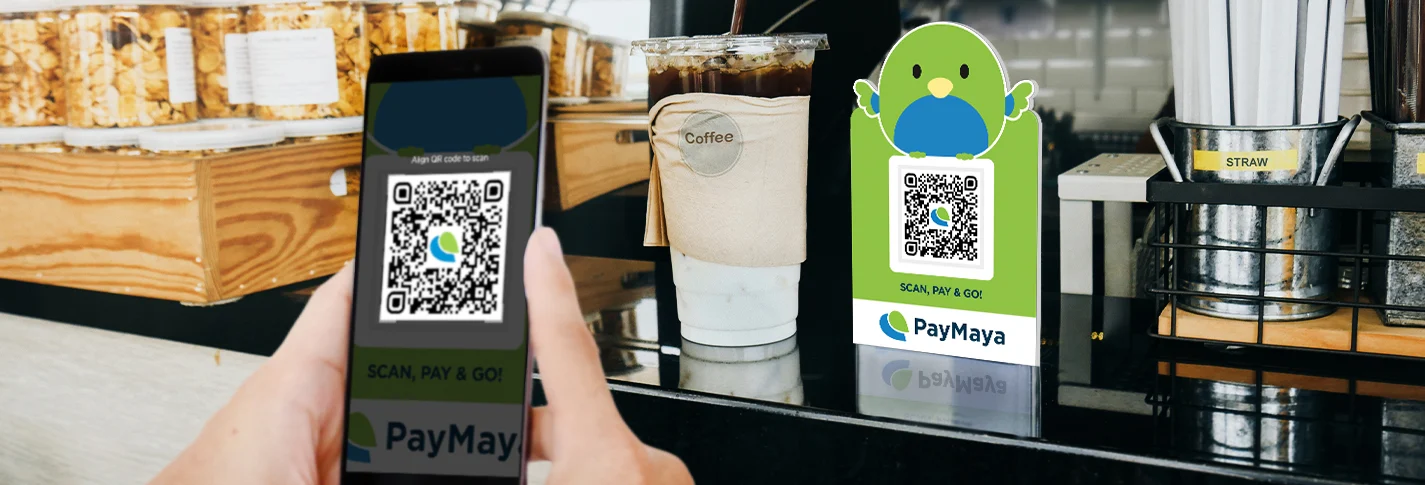Introduction
Welcome to a world where money is no longer the driving force behind our daily transactions. In the science fiction series Star Trek, the concept of a cashless society has captured the imagination of viewers for decades. In this futuristic vision, individuals and civilizations have moved beyond the need for physical currency, relying instead on advanced technology to facilitate their economic exchanges.
A cashless society refers to a system in which digital or virtual forms of payment, such as credit cards, mobile wallets, or cryptocurrencies, replace the need for physical cash. In such a society, financial transactions can be conducted electronically, eliminating the need for traditional paper money and coins.
While the concept may seem far-fetched, it is worth exploring the potential advantages of a cashless society. Without the limitations and inconveniences of physical currency, this hypothetical future could revolutionize our economic systems and transform the way we live and interact.
Technology plays a pivotal role in enabling and promoting a cashless society. Advancements in digital payment platforms, blockchain technology, and AI-driven financial services have already made significant progress towards a cashless future. With these innovations, the barriers to a cashless society are gradually being dismantled.
Join us as we delve into the fascinating world of Star Trek’s cashless society and explore the implications of a civilization no longer bound to the constraints of physical currency. We will also examine the economics of a trip to Mars within the context of a cashless society, shedding light on the financial considerations and factors influencing the cost of such a journey.
Overview of Star Trek’s Cashless Society
In the Star Trek universe, humanity has evolved beyond the need for money and operates within a prosperous cashless society. The primary goal of this society is to explore the unknown, improve the quality of life, and foster the overall well-being of its inhabitants.
In this utopian future, all basic needs such as food, shelter, and healthcare are provided for without the exchange of money. The replicator technology, which can instantly materialize any object or food item on demand, eliminates the need for traditional economic transactions.
Star Trek envisions a society where individuals are driven by personal growth and intellectual pursuits rather than financial gain. Money is no longer a measure of success or social status. Instead, individuals are encouraged to pursue careers and activities that fulfill their passions and contribute to the betterment of society as a whole.
This cashless society in Star Trek also embraces a philosophy of equality and cooperation. Resources are allocated based on need, and individuals are encouraged to work together for the betterment of the community rather than accumulating personal wealth.
While Star Trek’s portrayal of a cashless society is fictional, it offers a thought-provoking perspective on the potential benefits and possibilities of such a system. It encourages us to question the role of money in our lives and imagine alternate ways of organizing our economic systems.
As we explore the concept of a cashless society, we can draw inspiration from Star Trek’s vision and contemplate the ways in which we can create a more inclusive, equitable, and sustainable future.
What Does It Mean to Be Cashless?
In a cashless society, the use of physical cash is replaced by digital forms of payment. This means that transactions are conducted electronically, using methods such as credit and debit cards, mobile payment apps, and cryptocurrencies.
Being cashless offers a range of benefits and convenience. To begin with, it eliminates the need to carry around bulky wallets or wallets filled with different denominations of currency. Instead, individuals can simply carry a single card or use their mobile devices to make payments with just a few taps.
Another advantage is the increased security and reduced risk of theft. Physical cash can easily be lost or stolen, but digital transactions leave a traceable trail, making it easier to address any discrepancies or fraudulent activities.
Cashless transactions also offer greater transparency, as electronic records can be easily accessed and reviewed. This makes it easier to track expenses and manage personal finances more efficiently. Furthermore, digital payments can be seamlessly integrated with personal finance apps, allowing for real-time tracking and budgeting.
A cashless society also encourages financial inclusion. People who may have limited access to traditional banking services can still participate in the economy through digital payment solutions. Mobile wallets and online payment platforms provide opportunities for the unbanked or underbanked population to engage in transactions and participate in the formal economy.
Moreover, being cashless opens up a world of convenience and efficiency. With digital payments, there is no need to worry about carrying the correct change or waiting in line at an ATM. Payments can be made quickly and easily, whether in-person or online, facilitating faster and smoother transactions.
However, it is important to consider the potential drawbacks and challenges of a cashless society. The reliance on digital infrastructure means that access to technology and a stable internet connection becomes crucial. This may pose a barrier for certain populations, particularly those in remote areas or with limited resources.
Additionally, concerns about privacy and security arise in a cashless society. With every transaction leaving a digital footprint, individuals may worry about their personal financial information being vulnerable to cyber-attacks or surveillance. Striking a balance between convenience and safeguarding personal data becomes a crucial consideration in the transition to a cashless society.
All in all, being cashless represents a shift towards a more efficient, secure, and inclusive economy. It streamlines transactions, enhances convenience, and fosters financial inclusion. However, it is important to address challenges and ensure that the transition is done in a way that prioritizes security, privacy, and equal accessibility.
The Advantages of a Cashless Society
A cashless society offers numerous advantages that can revolutionize the way we conduct financial transactions and shape our overall economic landscape. Let’s explore some of the key benefits:
1. Convenience: One of the primary advantages of a cashless society is the convenience it offers. Gone are the days of fumbling for exact change or worrying about carrying enough cash. With digital payment methods, such as credit cards, mobile wallets, or online transfers, transactions can be completed quickly and effortlessly, whether in-person or online.
2. Enhanced Security: Unlike physical cash, digital transactions leave a traceable and auditable electronic trail. This reduces the risk of theft, as there is no physical currency to be stolen. In case of fraudulent activities, it also becomes easier to address and investigate the issue with the help of electronic records.
3. Improved Money Management: A cashless society makes it easier to track and manage personal finances. Digital transactions provide easily accessible electronic records, enabling individuals to gain insights into their spending habits, making budgeting and financial planning more efficient. Furthermore, personal finance apps can seamlessly integrate with digital payment methods, providing real-time tracking and automated expense categorization.
4. Financial Inclusion: Going cashless can help bridge the gap between the banked and unbanked population. Digital payment platforms and mobile wallets enable the unbanked or underbanked individuals, who may have limited access to traditional banking services, to participate in the economy. This promotes financial inclusion and empowers marginalized communities to engage in formal financial transactions.
5. Efficiency and Cost Reduction: Digital transactions are more efficient and cost-effective compared to handling physical cash. Businesses can save on expenses related to cash handling, such as labor costs associated with cash counting, security, and transportation. Additionally, the ability to make instant digital payments eliminates the need for manual reconciliation processes, leading to streamlined accounting and reduced paperwork.
6. Environmental Sustainability: Embracing a cashless society can have positive environmental impacts. The production, distribution, and disposal of physical cash involve significant resources and contribute to carbon emissions. By reducing the reliance on physical currency, we can minimize our ecological footprint and work towards a more sustainable future.
These advantages highlight why the transition to a cashless society holds immense potential. However, it is essential to address the challenges and concerns associated with privacy, data security, and equal access to ensure that the benefits are equitably enjoyed by all members of society.
The Role of Technology in a Cashless Society
Technology plays a crucial role in enabling and driving the transition towards a cashless society. It provides the tools and infrastructure necessary to facilitate digital transactions and reshape our economic systems. Let’s explore some key aspects of technology’s role in a cashless society:
1. Digital Payment Platforms: Technology has given rise to various digital payment platforms, such as mobile wallets, online banking, and payment apps. These platforms allow individuals to make electronic payments swiftly and securely, eliminating the need for physical cash. With just a few taps on a smartphone, payments can be made instantaneously, providing convenience and speed.
2. Contactless Payment Technologies: Contactless payment technologies, such as Near Field Communication (NFC) and QR codes, have revolutionized the way we make transactions. These technologies enable individuals to make payments by simply tapping or scanning their payment devices, such as smartphones or contactless cards, without the need for physical contact. This enhances both convenience and hygiene, particularly relevant in a post-pandemic era.
3. Biometric Authentication: Technology has introduced biometric authentication methods, such as fingerprint recognition, facial recognition, or iris scanning. These advancements enhance the security and ease of digital transactions. Biometric authentication adds an extra layer of protection, ensuring that only authorized individuals can access and make payments from their accounts.
4. Blockchain Technology: Blockchain technology, well-known for underpinning cryptocurrencies like Bitcoin, offers secure and transparent transactions. It eliminates the need for intermediaries, such as banks, by enabling peer-to-peer transactions. Blockchain’s decentralized nature ensures the integrity and immutability of transaction records, making it an ideal technology for a cashless society.
5. Internet of Things (IoT): The Internet of Things (IoT) connects various devices and objects to the internet, enabling them to communicate and exchange information. In a cashless society, IoT devices can facilitate seamless transactions. For instance, smart appliances may autonomously reorder groceries or pay utility bills, reducing the need for manual intervention.
6. Artificial Intelligence (AI): AI-powered systems can analyze transaction data to provide personalized financial insights and recommendations. These systems can help individuals manage their finances more effectively, budget wisely, and make informed spending decisions.
Technology continuously evolves, opening up new possibilities for a cashless society. However, it is crucial to address challenges such as data privacy, cybersecurity, and access to technology to ensure that the benefits of technology are available to everyone. By leveraging technology thoughtfully and responsibly, we can create a more inclusive and efficient cashless society.
Star Trek’s Vision of a Cashless Society
In the iconic science fiction series Star Trek, a vision of a cashless society is presented that challenges our conventional understanding of economics. In this future society, the concept of money as a means of exchange has become obsolete, replaced by a system of abundance and post-scarcity.
Star Trek envisions a future where individuals are no longer driven by the pursuit of wealth or material possessions. Instead, the focus is on personal growth, intellectual pursuits, and the betterment of society as a whole. In this society, the replication technology known as the replicator plays a central role. It can instantly materialize any object or food item, eliminating the need for traditional economic transactions.
With the replicator’s ability to create food, clothing, and other essential items, the basic needs of individuals are met without exchange or monetary considerations. This allows people to pursue their passions and interests, dedicating themselves to careers or activities that bring fulfillment and contribute to the betterment of society.
In this vision, the concept of ownership expands beyond personal possessions. Resources are shared and allocated based on need, fostering a sense of cooperation and communal responsibility. The absence of money as a measure of success or social status levels the playing field, allowing individuals to pursue their goals based on their interests and talents rather than financial considerations.
Star Trek’s vision of a cashless society extends beyond economic implications. It encompasses a philosophy of equality, inclusivity, and social progress. Discrimination and social divisions based on wealth become obsolete, as society values individuals for their contributions and character rather than their financial standing.
While Star Trek’s portrayal of a cashless society may be fictional, it encourages us to question the role of money in our own lives and imagine alternative economic systems. It challenges us to consider the potential benefits of a society that places value on personal growth, intellectual pursuits, and equality rather than monetary gain.
Although achieving a truly cashless society as depicted in Star Trek may seem distant, the series serves as a reminder that societal progress is possible. By embracing the values and principles espoused in Star Trek’s vision, we can work towards creating a more inclusive, equitable, and sustainable future.
Exploring the Economics of a Trip to Mars
As we delve into the concept of a cashless society, let’s explore the economics of a captivating journey: a trip to Mars. Considering the futuristic vision portrayed in Star Trek, where money is no longer a driving force, we can reimagine how the economics of such a trip would function in a cashless society.
Factors Affecting the Cost of a Trip to Mars:
1. Transportation Costs: The primary expense of a Mars trip would be the cost of transportation. In a cashless society, advancements in space travel technology, such as reusable rockets or advanced propulsion systems, may lower the transportation costs significantly. Access to space travel could become more accessible, turning what was once a privilege reserved for the elite into a possibility for a broader population.
2. Accommodation and Food Expenses: A trip to Mars would require provisions for food, water, and shelter during the journey and upon arrival. In a cashless society, advanced technologies like the replicator in Star Trek could potentially provide the necessary sustenance and habitat, reducing the dependency on traditional means of provisioning.
3. Recreational and Entertainment Costs: During the long journey to Mars, recreational and entertainment options will be essential to maintain the mental well-being of the travelers. Virtual reality experiences, immersive storytelling, and interactive entertainment could be part of the trip’s cost, enhancing the overall experience without the need for physical currency.
4. Healthcare and Safety Considerations: A successful Mars trip would require robust healthcare and safety measures. In a cashless society, advanced medical technologies and AI-driven diagnostic tools could ensure the health and safety of the crew and mitigate the potential risks of the mission. These advancements would require investment and might be factored into the cost of the trip.
Other Financial Considerations in a Cashless Society:
1. Personal Finances: In a cashless society, individuals would need to consider their personal financial situation before embarking on a Mars trip. Factors like budgeting, financial planning, and access to resources could influence an individual’s decision to undertake such an extraordinary journey.
2. Economic Impact: A Mars trip has the potential to stimulate economic growth and technological advancements. Investments made in space exploration could have a ripple effect on various industries, creating new job opportunities and generating revenue in a cashless society.
While these considerations provide a glimpse into the economics of a trip to Mars, it is important to note that the actual costs and logistics would depend on the progress of technology, scientific advancements, and the specific context of a cashless society.
As we push the boundaries of exploration and challenge the limits of human reach, imagining a cashless society opens up intriguing possibilities for economic systems and the affordability of once unimaginable ventures like a journey to Mars.
Factors Affecting the Cost of a Trip to Mars
Embarking on a trip to Mars is a monumental endeavor that carries significant financial implications. Several factors come into play when considering the cost of such a journey. Let’s explore some of the key factors that can affect the overall cost of a trip to Mars:
1. Transportation Technology: The cost of a Mars trip is heavily influenced by the transportation technology employed. Advancements in propulsion systems and reusable rockets could potentially reduce the cost of launching and landing spacecraft, making interplanetary travel more affordable in a cashless society. Research and development in space transport technologies are crucial in driving down costs and opening up opportunities for future missions.
2. Mission Duration: The duration of the journey to Mars significantly impacts the cost. A shorter trip would require fewer resources and provisions, reducing expenses along the way. Advances in propulsion technology and mission planning could potentially allow for faster travel times, which would have a positive impact on cost considerations.
3. Astronaut Selection and Training: Selecting and training astronauts is a significant investment in a Mars mission. Extensive training programs, physical evaluations, and psychological assessments are necessary to ensure the crew’s safety and preparedness for the challenges of deep space travel. The cost of selecting, training, and supporting the crew members is an important factor to consider in the overall cost of the mission.
4. Life Support Systems: Maintaining a habitable environment throughout the journey and during the stay on Mars is essential. Life support systems that provide breathable air, regulate temperature, manage waste, and ensure water supply are critical. Developing and maintaining these systems incur significant costs that would contribute to the overall expense of a Mars trip.
5. Mars Surface Operations: Once arriving on Mars, the cost of surface operations becomes a major consideration. Establishing habitats, conducting scientific experiments, and exploring the planet all require resources and equipment. The development and deployment of the necessary infrastructure, such as rovers, communication systems, and laboratories, would contribute to the total cost of a mission to Mars.
6. Return Journey: The cost of a Mars trip not only includes the outbound journey but also factors in the return journey. The feasibility and costs associated with returning to Earth are crucial considerations. Technologies like in-situ resource utilization (ISRU), where resources on Mars are utilized for fuel production, can potentially help reduce costs by providing fuel for the return journey.
7. Research and Development: Advancements in space travel technology and mission capabilities rely on continuous research and development. Investments in new technologies, materials, and scientific advancements drive innovation and impact the cost of a Mars trip. Research institutions and space agencies collaborate to push boundaries and develop cost-effective solutions for future missions.
It is important to note that these factors are subject to change due to technological advancements, scientific discoveries, and economic considerations. As the world moves closer to a cashless society, the economic landscape surrounding Mars missions may evolve, requiring continuous assessment, adaptation, and investment.
Considering these factors, the cost of a trip to Mars is a complex and multifaceted undertaking. It requires careful planning, technological advancements, and financial investments to make interplanetary travel more accessible and feasible in the future.
Transportation Costs in a Cashless Society
Transportation costs are a key consideration in the overall expense of a trip to Mars. In a cashless society, advancements in space travel technology and the absence of traditional currency can influence the economics of interplanetary journeys. Let’s explore the factors that impact transportation costs in a cashless society:
1. Advanced Propulsion Systems: The development and utilization of advanced propulsion systems can significantly affect transportation costs. In a cashless society, continued research and innovation in propulsion technology can lead to more efficient and cost-effective methods of interplanetary travel. Advancements such as ion propulsion, nuclear propulsion, or even breakthroughs in propulsion concepts like warp drives may reshape the economics of space travel by reducing the need for excessive fuel consumption or enabling faster travel times.
2. Reusable Rockets: Reusability is a crucial element in lowering transportation costs. In a cashless society, the emergence of reusable rockets, like SpaceX’s Falcon 9 or Blue Origin’s New Shepard, can revolutionize the affordability of space travel. These rockets can be flown multiple times, significantly reducing the cost per launch and making space missions more accessible and economically viable on a broader scale.
3. International Collaboration: Collaboration between space agencies, private companies, and international partners can help distribute the burden of transportation costs. In a cashless society, global cooperation and shared resources can contribute to cost sharing and joint missions. Collaborative efforts can pool technological expertise, equipment, and financial resources, making interplanetary travel more feasible and cost-effective for all participating entities.
4. Energy Efficiency and Sustainability: In a cashless society, emphasis on sustainability can lead to the development and utilization of energy-efficient technologies. Renewable energy sources such as solar or nuclear power can reduce the environmental footprint and overall transportation costs by minimizing dependency on fossil fuels and traditional energy sources. Investing in sustainable transportation methods can offer long-term economic benefits while preserving the environment.
5. Infrastructure Development: Building the necessary infrastructure for space travel is an important consideration. In a cashless society, investing in the construction of launch facilities, launch pads, spacecraft assembly centers, and other infrastructure becomes crucial. These long-term investments in infrastructure help optimize space travel operations and reduce costs over time through improved efficiency and economies of scale.
As technology continues to evolve and cashless societies become more prevalent, transportation costs in space travel are likely to be influenced by advancements in propulsion, reusability, international collaboration, sustainability, and infrastructure development. These factors will collectively shape the economics of interplanetary journeys, potentially making them more accessible, cost-effective, and sustainable in the future.
Accommodation and Food Expenses on a Mars Trip
When considering a trip to Mars, accommodation and food expenses play a crucial role in the overall cost of the mission. In a cashless society, advancements in technology can revolutionize how these expenses are managed during the journey and upon arrival on the Red Planet. Let’s explore the key factors that impact accommodation and food expenses on a Mars trip:
1. Habitats and Living Spaces: The construction and maintenance of habitats will be a significant expense on a Mars trip. In a cashless society, advanced engineering techniques may be employed to create durable and sustainable habitats that provide a safe and comfortable living environment for the astronauts. Technologies like 3D printing and utilization of local resources on Mars, such as regolith for building materials, can potentially lower the costs associated with habitat construction.
2. Life Support Systems: Providing a habitable and safe environment on Mars requires life support systems. In a cashless society, innovative technologies could be employed to support the astronauts’ basic needs, such as clean air, temperature regulation, waste management, and water and food supply. Closed-loop systems, where resources are recycled and reused, may reduce the need for constant resupply from Earth, thus minimizing ongoing costs.
3. Sustainable Food Production: Food production will be essential for sustaining the crew during a Mars trip. Traditional farming may not be feasible, so alternative methods like hydroponics, aeroponics, or lab-grown food could be employed in a cashless society to ensure a steady food supply. Embracing these innovative approaches can minimize the resources required for food production, promote self-sustainability, and potentially decrease the costs associated with resupplying food from Earth.
4. Nutritional Requirements: Providing balanced and nutritious meals for the crew is critical for their physical and mental well-being. In a cashless society, advancements in food science and nutrition may enable the creation of compact and nutrient-dense food options that meet the specific dietary needs of astronauts. These innovations can help optimize the nutritional value of the food while reducing the volume and weight, ultimately impacting the cost of transporting supplies to Mars.
5. Long-Term Considerations: Long-duration missions on Mars necessitate careful planning for extended accommodation and food expenses. In a cashless society, it becomes vital to anticipate the crew’s needs for prolonged habitation and sustenance and ensure sufficient resources are allocated for the entire mission duration. This includes accounting for potential contingencies, optimizing resource utilization, and maintaining long-term sustainability within the constraints of the mission budget.
While accommodation and food expenses are significant considerations on a Mars trip, advancements in technology and the utilization of innovative approaches can help reduce costs and enhance self-sustainability. Embracing a cashless society allows for the exploration of creative solutions that optimize resources, minimize waste, and promote long-term viability during the journey to Mars and the establishment of a sustainable presence on the planet.
Recreational and Entertainment Costs on a Mars Trip
While a trip to Mars is a scientific and technical endeavor, it is essential to consider the recreational and entertainment factors that contribute to the overall well-being of the crew during the journey. In a cashless society, innovative approaches can be explored to provide engaging and meaningful recreational activities on a Mars trip. Let’s explore the key factors that impact recreational and entertainment costs:
1. Virtual Reality Experiences: Virtual reality (VR) technology can offer immersive experiences that transport astronauts to different worlds, providing a sense of novelty and variety during the long journey. In a cashless society, VR equipment and software can be utilized to create virtual environments, games, and simulations that entertain and engage the crew, offering a valuable respite from the monotony of deep space travel.
2. Interactive Storytelling: Engaging storytelling through interactive media, such as interactive books, films, or games, can provide intellectual and emotional stimulation during the Mars trip. In a cashless society, advancements in artificial intelligence (AI) and augmented reality (AR) can further enhance these interactive experiences, tailoring them to the personal interests and preferences of the astronauts.
3. Fitness and Physical Activities: Maintaining physical well-being and exercise routines is crucial on a Mars trip. In a cashless society, equipment and facilities for exercise activities, such as treadmills or resistance training, can be provided to help mitigate the physical effects of microgravity and promote crew health. Incorporating entertainment elements into fitness regimens, like gamifying exercise routines, can make workouts more enjoyable and help astronauts stay motivated.
4. Personalized Recreation Options: In a cashless society, personalized recreation options become viable, addressing individual preferences and interests. Providing access to diverse recreational resources like books, movies, music, or hobbies tailored to each crew member’s taste can enhance their well-being. E-books and digital libraries can reduce the physical storage requirements while offering a wide range of reading material.
5. Psychological and Social Support: Mental well-being is crucial on a Mars trip. Psychological support systems, including counseling services and regular check-ins with mental health professionals, can help address the emotional challenges of long-duration space travel. Encouraging social engagement and communication through video calls or virtual social platforms can foster a sense of connection and mitigate feelings of isolation.
6. Mission-Specific Activities: Incorporating mission-specific activities, experiments, or research that align with crew members’ interests can help them stay engaged and feel a sense of purpose. In a cashless society, the development and implementation of these activities can be planned in advance, ensuring that they provide both entertainment value and contribute to the overall mission objectives.
Optimizing recreational and entertainment costs is vital for the mental and emotional well-being of the crew on a Mars trip. In a cashless society, leveraging technology, creative storytelling, personalized experiences, and psychological support systems can enhance the recreation and entertainment options available to astronauts, making the long journey to Mars more enjoyable and fulfilling.
Healthcare and Safety Considerations on a Mars Trip
Embarking on a journey to Mars requires careful attention to healthcare and safety considerations to ensure the well-being of the crew. In a cashless society, advanced medical technologies and comprehensive safety protocols can be utilized to address potential health issues and mitigate risks. Let’s explore the key factors that impact healthcare and safety on a Mars trip:
1. Medical Training and Selection: The crew selected for a Mars mission would undergo rigorous medical screening and training. In a cashless society, sophisticated medical evaluation techniques, such as genetic testing and personalized medicine, can be employed to assess crew members’ health and identify potential risks. Comprehensive medical training would also equip astronauts with the knowledge and skills necessary to address common health issues during the mission.
2. Remote Medical Support: While en route to Mars, access to immediate medical help may be limited. In a cashless society, telemedicine and remote medical support systems could play a critical role in providing expert advice and guidance from healthcare professionals on Earth. Advanced diagnostic technologies and AI-driven medical systems may assist with diagnosing and treating conditions remotely, reducing the need for extensive medical equipment onboard.
3. Onboard Medical Facilities: Equipping the spacecraft with suitable medical facilities is crucial for providing the necessary healthcare. In a cashless society, advancements in miniaturized medical devices and equipment can ensure that vital medical procedures can be performed onboard. Portable diagnostic tools, remote monitoring devices, and teleoperated robotic surgery systems can enable effective medical interventions while minimizing the need for extensive medical infrastructure.
4. Psychological Support: Isolation and long-duration space travel can take a toll on the mental well-being of the crew. In a cashless society, psychological support systems, including regular counseling sessions and virtual support networks, can be in place to address psychological challenges and promote emotional resilience. Techniques such as mindfulness training or virtual reality therapy can help astronauts cope with the psychological stressors of a Mars trip.
5. Radiation Protection: Exposure to space radiation poses a significant risk during interplanetary travel. In a cashless society, advanced shielding materials, improved spacecraft design, and radiation monitoring systems can minimize radiation exposure. Additionally, ongoing research into radioprotective pharmaceuticals and regenerative medicine may further enhance the crew’s safety and well-being.
6. Emergency Response and Contingency Plans: Creating comprehensive emergency response and contingency plans is crucial to ensuring the safety of the crew during a Mars trip. In a cashless society, scenario-based training, regular simulations, and advanced communication systems can be employed to address potential emergencies and facilitate timely decision-making. The ability to troubleshoot and respond to unforeseen challenges efficiently is vital for the crew’s safety and the overall success of the mission.
Effective healthcare and safety considerations are imperative for the success and well-being of astronauts on a Mars trip. In a cashless society, leveraging advanced medical technologies, comprehensive safety protocols, remote support systems, psychological support, and radiation protection measures can mitigate risks and enable the crew to navigate potential health issues during their extraordinary journey to the Red Planet.
Other Financial Considerations in a Cashless Society
While transportation, accommodation, and healthcare are significant financial considerations on a Mars trip, there are other important factors to address in a cashless society. Let’s explore some of these considerations:
1. Mission Funding: A Mars trip requires substantial funding, and in a cashless society, sourcing funds for such a mission would require innovative approaches. Public-private partnerships, crowdfunding, or collaborative funding models could be explored to secure the necessary financial resources. Engaging the public through educational programs and fundraising initiatives can foster support and increase investment opportunities.
2. Research and Development: The advancement of space technologies and systems is an ongoing process that requires continuous research and development. In a cashless society, dedicating financial resources to R&D is crucial to drive innovation, improve mission efficiency, and reduce costs. Investing in new materials, propulsion technologies, life support systems, and scientific research can contribute to long-term economic benefits and technological progress.
3. Regulatory Compliance: Complying with regulatory requirements and space treaties may incur financial obligations. In a cashless society, financial allocations for legal, ethical, and safety compliance become significant. Ensuring compliance both domestically and internationally is vital to maintain the integrity of the mission and foster international cooperation and support.
4. Mission Sustainability: Long-term sustainability is a crucial aspect of a Mars trip. Establishing a sustainable presence on Mars involves investing in infrastructure, resource utilization, and environmental protection measures. In a cashless society, financial considerations for sustainability, such as utilizing renewable energy sources, managing waste, or harnessing local resources, can enhance the cost-effectiveness and long-term viability of the mission.
5. Insurance and Risk Mitigation: Given the inherent risks associated with interplanetary travel, insurance coverage and risk mitigation strategies are essential. In a cashless society, securing insurance against mission failures, accidents, or unforeseen circumstances becomes an important financial consideration. Managing and mitigating risks through robust contingency plans, safety protocols, and comprehensive insurance policies are vital to protect both the crew and the financial investment in the mission.
6. Economic Impact and Return on Investment: A Mars trip can generate economic returns and have a broader impact on technology development, job creation, and scientific advancement. In a cashless society, understanding the potential economic benefits and evaluating the return on investment becomes imperative. Assessing the long-term economic impact, spin-off technologies, and the ability to inspire future generations can help justify the financial investment in such a transformative endeavor.
As we explore the financial aspects of a Mars trip in a cashless society, it is important to take a holistic view, considering funding strategies, research and development, regulatory compliance, sustainability, risk mitigation, and the potential economic impact. Balancing financial investment with the pursuit of knowledge, exploration, and the betterment of humanity is crucial in realizing the possibilities of interplanetary travel.
Conclusion
As we delve into the concept of a cashless society and explore the economics of a trip to Mars, it becomes evident that the future holds immense possibilities and challenges. Star Trek’s vision of a cashless society challenges our understanding of traditional economics and prompts us to imagine an alternative world where money no longer dictates our daily transactions.
In a cashless society, transactions are conducted electronically, eliminating the need for physical currency. Technology plays a crucial role in enabling this transition, with advancements in digital payment platforms, blockchain technology, and AI-driven financial services driving us closer to this futuristic reality.
When considering a trip to Mars, factors such as transportation costs, accommodation and food expenses, recreational and entertainment costs, healthcare and safety considerations, and other financial considerations all play significant roles. In a cashless society, advancements in technology and innovative approaches can shape the financial landscape of interplanetary travel, making it more accessible, cost-effective, and sustainable.
While the realization of a cashless society or a trip to Mars may still seem distant, exploring these concepts expands our horizons and challenges us to reimagine our economic systems and possibilities for the future.
Ultimately, transitioning to a cashless society and embarking on a journey to Mars require careful planning, continuous technological advancements, international collaboration, and innovative solutions. By embracing the values that Star Trek presents – equality, cooperation, and the pursuit of personal growth – we can shape a future where economics, technology, and exploration are intertwined, leading us towards a more inclusive, equitable, and prosperous society.

























